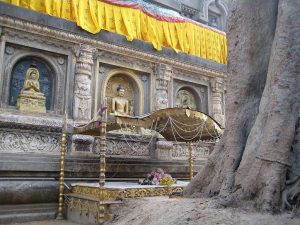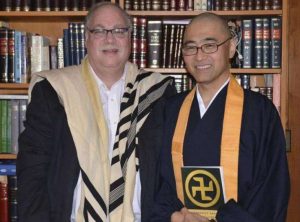
The Kasan Institute of Buddhist Culture in Seoul on Tuesday announced the completion of the Kasan Encyclopedia of Buddhism, the world’s largest Buddhist encyclopedia. The final volumes, 17–20, were published this year, concluding a 42-year project that began with Ven. Jikwan’s vision to make Buddhism’s extensive history accessible in standard Korean.
In May 1982, Ven. Jikwan, then 50 years old, prayed at Gyeongguk-sa, a Buddhist temple near Seoul’s Bukhan Mountain. As the dean of Buddhist studies at Korea’s largest Buddhist university, Ven. Jikwan embarked on a mission to compile an encyclopedia that would document Buddhism’s extensive history in a way that was accessible to the general public.
“After all these years, I begin to write an encyclopedia,” he prayed. “May the eight guardians be on my side and the Buddha’s wisdom manifest itself.” (The Korea Herald)
This prayer marked the beginning of an ambitious project. In 1991, Ven. Jikwan established the Kasan Institute of Buddhist Culture. In 2005, Ven. Jikwan became the head of the Jogye Order of Korean Buddhism, the country’s largest school of Buddhism. What started as solitary research evolved into a large-scale project involving 15,000 personnel over three decades. The first two volumes took a decade to complete, with subsequent volumes released annually. Ven. Jikwan passed away in 2012, shortly after the 13th volume was published.
“Work together closely and finish the job,” he urged, six months before his death. (SayArt)
The Kasan Encyclopedia of Buddhism holds the claim of being the world’s most expansive Buddhist encyclopedia, with nearly 120,000 entries and 266,000 pages. It covers major concepts from scriptures, philosophical texts, historical materials, and more, all arranged alphabetically in everyday Korean. The encyclopedia pays particular attention to the cultural adaptations of Buddhism in Korea, with 30 per cent of the entries devoted to Korean Buddhism.
Since Buddhism’s introduction to Korea in the fourth century, the religion has incorporated local folklore, ideas, artistic ideals, and more. The encyclopedia includes primary source references in literary Chinese, Tibetan, and Sanskrit, highlighting a commitment to comparative study.
“It is a task of utmost importance to compile an encyclopedia of Korean Buddhist history, as Buddhism has played a central role in the cultural and spiritual lives of Koreans,” Ven. Jikwan wrote in the preface to the 13th volume. “We hope to awaken the self-esteem of this nation’s spiritual history through this work.” (The Korea Herald)
The Kasan Encyclopedia of Buddhism will be available in public libraries and museums in Korea, as well as at select colleges overseas. The institute will send out the latest volumes to ensure its availability to researchers.
Buddhism entered Korea during the Three Kingdoms period (57 BCE–668 CE). According to historical records, Buddhism was first introduced to Goguryeo in 372 CE, to Baekje in 384 CE, and to Silla in 527 CE. The religion’s initial acceptance was facilitated by the support of the ruling elites, who saw the potential for Buddhism to unify their kingdoms and enhance their cultural and spiritual status.
The introduction of Buddhism to Korea significantly influenced its cultural and artistic development. Buddhist temples, sculptures, and paintings became integral parts of Korean heritage. Notable examples include the temple Bulguk-sa and Seokguram Grotto, both of which are UNESCO World Heritage Sites.
During the Unified Silla period (668–935), Buddhism flourished and became the state religion. This era saw the construction of many grand temples and the production of important Buddhist texts. The Goryeo dynasty (918–1392) continued to support Buddhism, leading to the creation of the Tripitaka Koreana, a comprehensive collection of Buddhist scriptures carved onto wooden blocks. This work is considered one of the most important and complete collections of Buddhist texts in the world.
However, Buddhism’s influence began to wane during the Joseon dynasty (1392–1897), which promoted Confucianism as the state ideology. Despite this, Buddhism persisted and continued to evolve, incorporating elements of Korean culture and tradition.
Ven. Jikwan’s effort to compile an encyclopedia of Korean Buddhism reflects the enduring significance of Buddhism in Korean society. By documenting the religion’s history, practices, and cultural adaptations, the Kasan Encyclopedia of Buddhism serves as a testament to the profound impact of Buddhism on Korea’s spiritual and cultural landscape.
The completion of this encyclopedia marks a significant milestone in the preservation and dissemination of Korean Buddhist heritage. It provides scholars, practitioners, and the general public with an invaluable resource for understanding the rich and complex history of Buddhism in Korea.
See more
42 years in the making, monumental Buddhist encyclopedia completed (The Korea Herald)
Completion of Monumental Buddhist Encyclopedia After 42-Year Journey (SayArt)
Venerable Ji-kwan Passes Away At the Age of 79 (Buddhist Channel)
Related news reports from BDG
Special Report: Ven. Pomnyun Sunim Leads 10,000 People in Great Dharma Assembly for Peace on the Korean Peninsula
Korean Expert on Hand-Copied Buddhist Texts Visits Yale with Extensive Exhibition
Buddhist Monk Celebrates 50 Years of Indo-Korean Diplomatic Ties with New Book on Korean Buddhist History
Permanent Endowed Chair in Korean Buddhist Studies to Be Established at UCLA—A First Outside of Korea
Association of Korean Buddhist Orders Publishes Buddhist National Treasures of Korea
Related features from BDG
The First Year Anniversary of Vello Vaartnou’s Chinese Buddhist Encyclopedia
The Chinese Buddhist Encyclopedia













